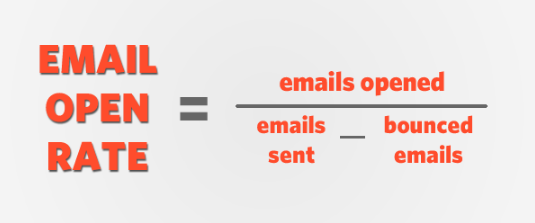As digital engagement continues to grow, companies are turning to avenues like social selling, and the next “big thing” that will launch them into the monetary stratosphere. While it’s always proactive to be on the lookout for new technologies and strategies that can increase the productivity and success of your business, it’s equally important to stay committed to practices that are still working; namely, email marketing.
The practice began in 1978, “when Gary Thurek, a marketing manager for the now defunct computer company Digital Equipment Corporation, sent out an unsolicited mass email promoting his firm’s computer products.” While Thurek was ultimately scolded for his unauthorized email outreach, it’s hard to argue against his efforts.
As a direct result of his mass email, DEC “sold $ 13 million or $ 14 million worth” of their products. Of course, what Thurek really did was create the first spam email; although it was certainly the beginning of what we now affectionately call email marketing.
Since that time, email marketing has become more advanced, and less intrusive. Rather than collect a random sampling of contact information and fire away, companies now target specific users who have already shown an interest in their product, been flagged due to their browsing patterns, or who at the very least have visited their website. Incidentally, this is where the email marketing journey begins; collecting the right data.
Getting access
In today’s age, it’s impossible to conduct a successful email marketing campaign without a populated list of users. The best (and most moral) way to accomplish this is to build a permission-based list.
“Permission-based email marketing is used effectively everyday by hundreds of thousands of organizations to build their brands, increase sales, and strengthen relationships with their client and members. Permission-based email marketing is sending messages to people who have asked to receive them.”
Lists like this can be built by offering something to individuals. Exclusive access to sales, marketing, or technical advice; a download code to an eBook; or invitations to “members only” events. If your business offers a service, you can also offer free-demos in order to attract interested users.

There are other ways to acquire a populated email marketing list; namely through purchasing them. While you can go about email marketing this way, it’s important to note that it’s always a terrible idea to do so.
For starters, a number of “reputable email marketing vendors don’t let you send emails to lists you’ve bought.” A marketing software like Hubspot simply won’t allow it, as they require that you “use opt-in email lists.” Moreover, even if you choose to use a less reputable software vendor, it’s not guaranteed that the list will work. “One customer’s ill-gotten email address list can poison the deliverability of the other customers on that shared IP address.”
Put more simply, you don’t want to take shortcuts when it comes to building an email marketing list. Take the time and effort into building a permissions-based list. Not only will you be targeting a better group of consumers, but there’s also no chance of your campaign being infected by a poisonous email address.
Selecting an email marketing provider
Depending on how many users you want to reach, how you want to talk to them, and how much creative control you’d like to have for your email marketing campaigns, trying to find the perfect provider can be just as difficult as actually putting together your list.
Fortunately, Business News Daily has already done a significant amount of legwork, and provided detailed reviews for a number of software systems. They’ve reviewed more than 50 platforms, which should undoubtedly be more than enough for you to start the process with.
It’s also important to ask yourself the right questions to ensure you land on the right email marketing solution.

The answers to these questions will ultimately direct you to the tailored solution. While this may be time consuming, and potentially delay the start date for your email marketing campaigns, it’s vital that you put forth the time and care that these questions require. If you speed through them, and wind up with the wrong platform, you’ll need to start back at square one.
Don’t rely solely on software to track your email marketing success
Once your email marketing campaign has been set up, it’s time to monitor the results. Unfortunately, this is where a number of people begin to lose a grasp on what’s really going on with their data. Too often do email marketing users rely only on email open rates, and take the results at face value; but it’s vital to dig deeper, as Chris Woodward explains.
“What most don’t know is that the mail open rates that your email automation reports is never 100% accurate. And whether you use Streak…SugarCRM, SalesLoft, MailChimp, or any other solution, this is still the case.
Why? Because every time you send an email, these software solutions place a code snippet that gets triggered when an email gets opened. No big deal, right? Not exactly”
Ultimately, this data can be misleading due to an issue with the code snippets that are embedded.“If someone has HTML email disabled in their email client, your email automation will not register it as an ‘opened’ email.”
Fortunately, thanks to echogravity, there’s a workaround that can be used in these situations.

This simple formula “takes into account bounced emails and also eliminates the margin of error that can occur when going solely off of the ‘open rate’ numbers from other automation platforms. “
While you may prefer to simply stick with the data being returned by your specific platform, it’s important to remember that the results may not be 100 percent accurate. Don’t take them as gospel, and make sure to continually ask yourself “do these results make sense.”
With email marketing, it’s crucial that you don’t take any shortcuts. While that’s generally true for most things in life, it’s especially true for this business practice. Cutting corners and accepting data without fact-checking can lead to disastrous results. Before getting an email marketing campaign up and running, make sure that you’ve built a permission-based list to target, and that you’ve asked yourself the necessary questions to determine which platform to use.
Digital & Social Articles on Business 2 Community(66)








